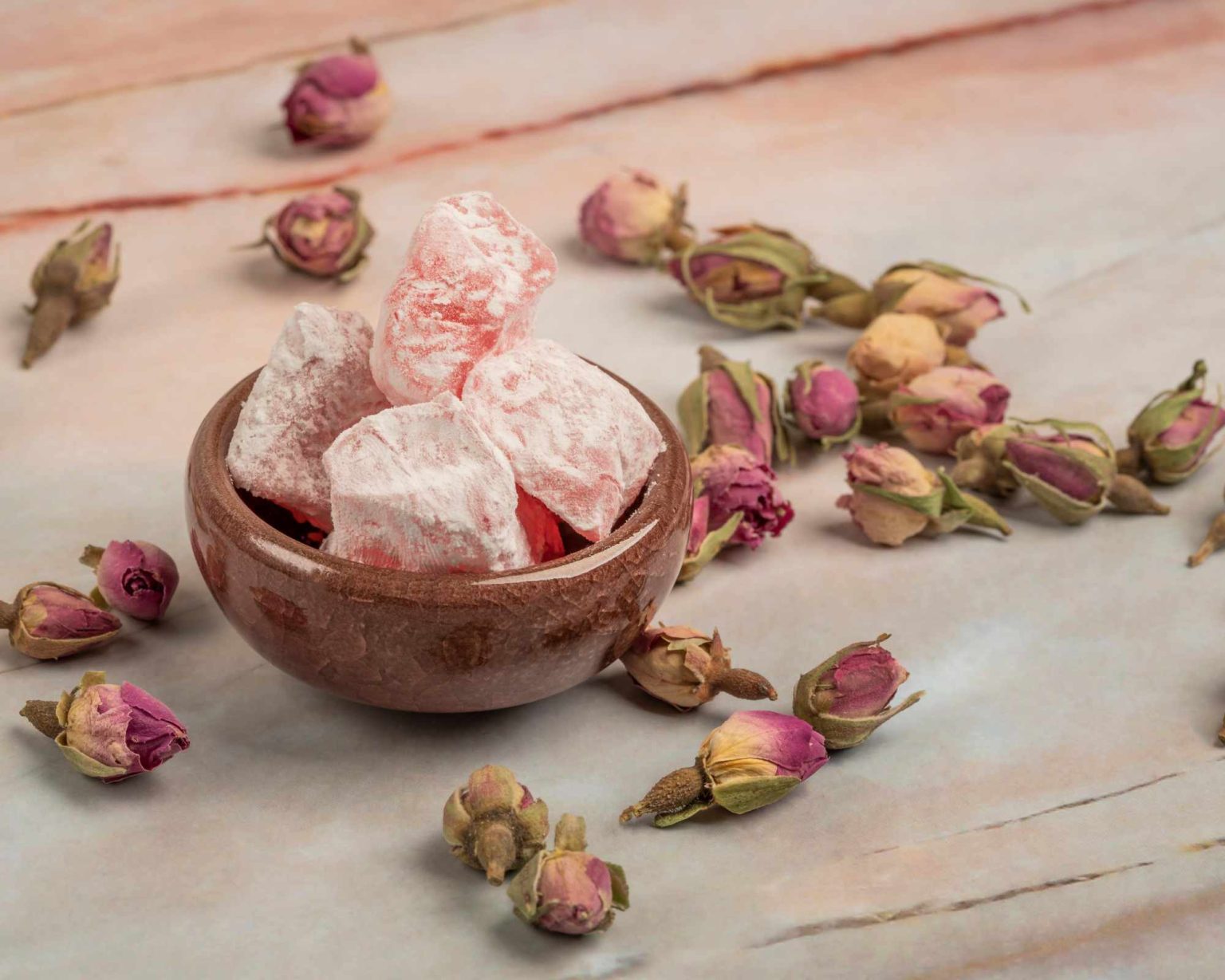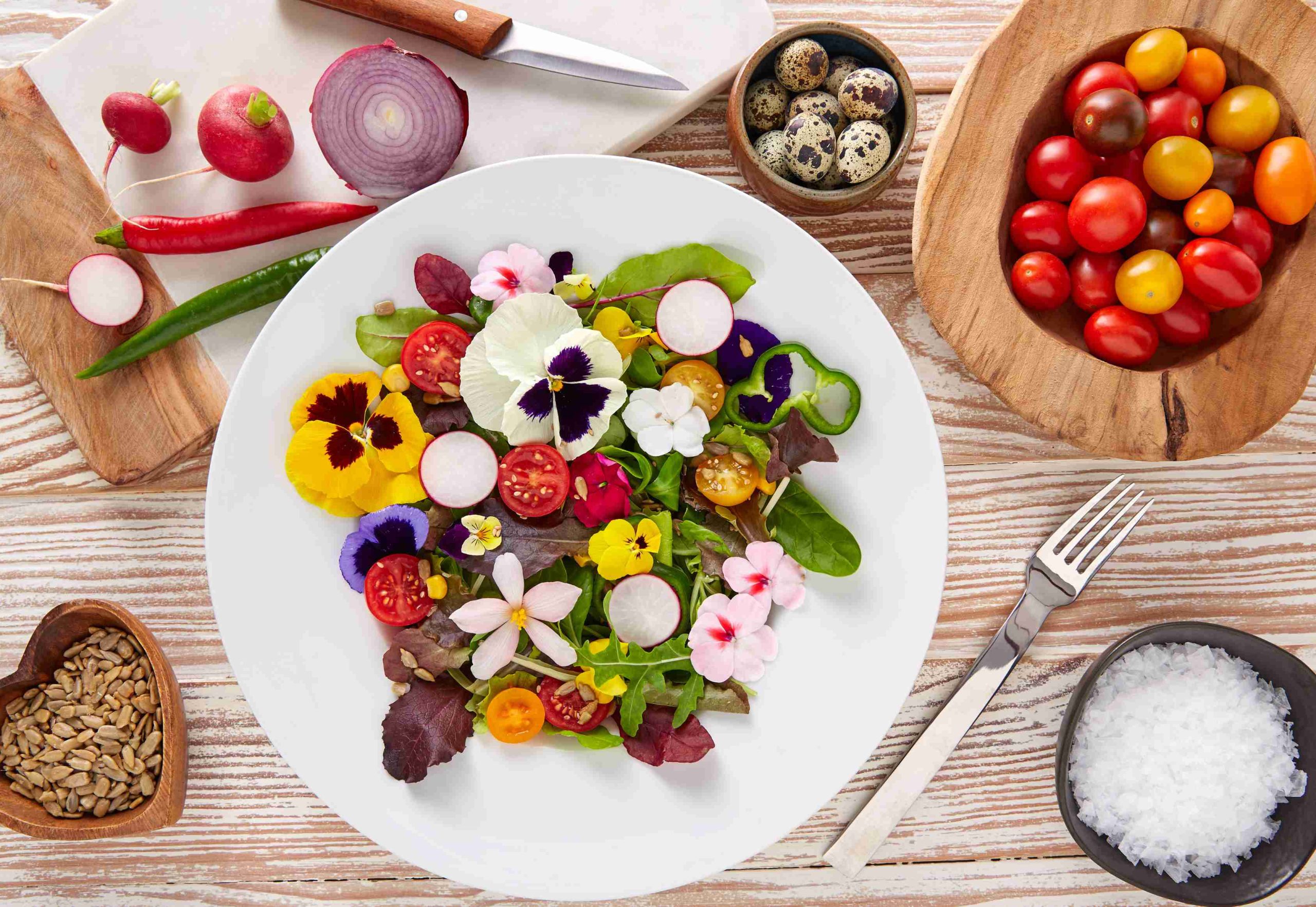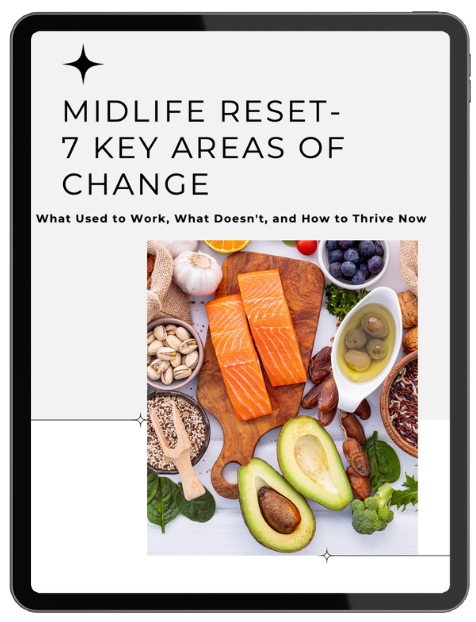Are you ready to unleash the beauty and flavour of your garden? Well, get ready to dive into the enchanting world of edible flowers! At YourNatureShaker, we’re all about embracing the wonders of nature and enhancing our culinary adventures.
So, let’s talk about edible flowers – these stunning blooms that catch your eye and make your taste buds dance with joy. You might be surprised to know how popular they’re becoming in the gardening scene.
That’s why I’m here to guide you through the art of growing and using edible flowers in your very own garden. I’ve got some practical tips and creative ideas just for you, especially if you’re someone on a mission to enhance your culinary experience.
Whether you’re an experienced green thumb or a food lover looking to add a touch of elegance to your dishes, let’s embark on this journey together. Together, we’ll uncover the secrets of cultivating and harnessing the magic of edible flowers. Get ready to take your meals to a new level with these blossoming delights!
The Appeal of Edible Flowers
Edible flowers hold a rich cultural significance in various cuisines around the world. From delicate rose petals used in Middle Eastern sweets to vibrant marigold blooms gracing Indian dishes, different cultures have long embraced the culinary potential of flowers. And now, the growing demand for edible flowers in the UK reflects the increasing appreciation for diverse flavours and unique gastronomic experiences.
Floral aesthetics have become a popular trend in gardens and plates as people seek to elevate their culinary presentations. Imagine serving a fresh salad adorned with colourful pansies or garnishing a dessert with the exquisite petals of a hibiscus flower. The visual impact alone can make your dishes Instagram-worthy while adding a touch of natural beauty to your dining experience.
Moreover, the sensory aspect of edible flowers enhances the overall enjoyment of a meal. The subtle floral notes and gentle crunch of certain blooms can complement and enhance the flavours of a dish, providing a multi-dimensional taste experience. It’s like taking a journey through a garden with every bite.
Preparing Your Garden for Edible Flowers
To ensure the success of your edible flower garden, it’s essential to create the ideal growing conditions for these delicate blooms. Edible flowers grow well in sunny areas, so opt for a location in your garden that gets the most amount of sunlight throughout the day. Please keep this in mind as you plan your garden.
Additionally, ensure that the soil is well-draining and fertile, as these flowers prefer nutrient-rich environments. Enhance the soil by adding organic material like compost to enhance its quality and fertility.
Regarding watering, edible flowers generally prefer consistent moisture without being overly saturated. Ensure to water the plants consistently, especially during drought, and prevent the soil from completely drying.
However, be cautious not to overwater, as excessive moisture can lead to root rot and other issues. Finding the right balance is crucial for the health and vitality of your edible flowers.
One of the great advantages of edible flowers is their versatility in different gardening setups.
Whether you have a spacious garden or limited space, you can still enjoy these blooms’ beauty and culinary benefits. Traditional garden beds offer ample room to grow a variety of edible flowers. At the same time, container gardening allows you to cultivate them in small spaces, balconies, or even windowsills. Containers provide the flexibility to move the plants as needed and create stunning displays.
Incorporating edible flowers in your garden also aligns with sustainable practices. So, as you prepare your garden for the arrival of edible flowers, remember to provide them with the optimal growing conditions they need.
Planting and Growing Edible Flowers (step-by-step)
A. Step-by-step guide on how to plant edible flowers in your garden, including soil preparation, planting techniques, and spacing considerations:
1.Soil Preparation:
a. Select a spot in your garden that receives ample sunlight on a daily basis.
b. Make sure the soil has good drainage and fertility. If the soil is dense or clay-like, add organic materials like compost or well-aged manure to enhance its texture and drainage.
2. Selecting Edible Flowers:
a. Research and choose edible flowers suitable for your climate and growing conditions. Some popular options include roses, lavender, pansies, nasturtiums, violets, calendula, and marigolds.
b. Make sure the flowers you choose are safe for consumption and have not been treated with pesticides or other harmful chemicals.
3. Planting Techniques:
a. Start by preparing the flower bed or containers. Clear any weeds or debris and loosen the soil with a garden fork or tiller.
b. Dig holes or trenches in the soil, following the recommended spacing for the specific flower variety.
c. Gently remove the flowers from their containers or nursery pots, carefully not to damage the roots. If the plants are root-bound, loosen the roots slightly before planting.
d. Place the flowers in the prepared holes or trenches, ensuring the plant’s crown (where the stems meet the roots) is level with the soil surface.
e. Backfill the holes with soil, firming it gently around the roots to eliminate air pockets.
f. Water the plants thoroughly after planting to settle the soil.
4. Spacing Considerations:
a. Follow the recommended spacing guidelines for each specific flower variety, as different plants have varying growth habits and require different amounts of space.
b. Generally, small flowers like pansies can be spaced around 6-8 inches apart, while larger flowers like roses may require 18-24 inches of space between plants.
c. Proper spacing ensures adequate air circulation, reduces disease risk, and allows each plant to receive sufficient sunlight, water, and nutrients.
Care and Maintenance:
a. Regularly water the flowers, ensuring the soil remains moist but not excessively wet. Spread mulch around the plants to help keep the soil moist and prevent weed growth.
b. Fertilize the flowers according to their specific needs. Some edible flowers may benefit from a balanced, slow-release fertilizer applied during the growing season.
c. Monitor for pests and diseases, and take appropriate measures to control them, preferably using organic methods.
d. Remove spent flowers regularly to encourage continuous blooming and prevent the plants from going to seed.
e. Harvest the flowers when they are fully mature but before they start to decline. Follow proper harvesting techniques for each flower variety, as some may require removing petals, while others can be harvested whole
B. Specific recommendations for popular edible flowers:
Roses:
- Soil Preparation: Roses prefer well-drained soil rich in organic matter. It is best to amend the soil with compost before planting. The ideal seasons to plant roses are spring and autumn. Please keep in mind these seasons when planning to incorporate roses in your garden.
- Planting Techniques: Dig a hole wide and deep enough to accommodate the roots of the rose plant. Place the rose in the hole, ensuring the bud union (the swollen area where the rose is grafted onto the rootstock) is level with the soil surface.
- Spacing Considerations: Space roses approximately 18-24 inches apart to allow for their bushy growth habit.
- Care and Maintenance: Roses require regular watering, especially during dry periods. Prune them annually to remove dead or damaged wood and promote healthy growth. Fertilize with a rose-specific fertilizer according to the package instructions.

Lavender:
- Soil Preparation: Lavender thrives in well-drained, sandy soil. Improve drainage by adding sand or gravel to the soil before planting.
- Planting Techniques: Dig a hole slightly larger than the plant’s root ball. Place the lavender in the hole, ensuring it is planted at the same depth it grew in the nursery pot.
- Spacing Considerations: Space lavender plants around 12-18 inches apart to allow for their spreading growth habit.
- Care and Maintenance: Water lavender sparingly, as it is drought-tolerant. Prune the plants after flowering to maintain their shape and encourage new growth. Avoid over-fertilization, which can lead to excessive foliage growth and reduced flowering.
Pansies:
- Soil Preparation: Pansies thrive in soil that has good drainage and is enriched with organic matter. Before planting, improve the soil by adding compost or well-aged manure.
- Planting Techniques: Dig small holes or trenches and place the pansies at the same depth they grew in the nursery pots.
- Spacing Considerations: Space pansies approximately 6-8 inches apart to allow for their compact growth habit.
- Care and Maintenance: Water pansies regularly to keep the soil evenly moist. Deadhead spent flowers to promote continuous blooming. Pansies benefit from occasional light fertilization with a balanced flower fertilizer.
Nasturtiums:
- Soil Preparation: Nasturtiums are adaptable and can grow in various soil types but prefer well-drained soil. Get the soil ready by removing weeds and incorporating compost or organic matter.
- Planting Techniques: You can plant nasturtium seeds directly into the prepared soil or start them indoors and move them outside once the risk of frost has disappeared.
- Spacing Considerations: Space nasturtiums around 10-12 inches apart to allow for their sprawling growth habit.
- Care and Maintenance: Water the plants regularly but avoid overwatering. Nasturtiums do not require much fertilizer, as excessive nutrients can produce more foliage than flowers. Remove any dead or damaged leaves and flowers to keep the plants healthy.

Caring for Edible Flowers
Taking proper care of your edible flowers is crucial for their health and productivity. You can ensure that your plants flourish and yield a plentiful harvest of gorgeous blossoms by performing a few important maintenance tasks.
Watering is a crucial aspect of flower care. Edible flowers generally require regular watering, especially during dry spells. Maintain consistently moist soil, but avoid overwatering since excessive moisture can cause root rot. Aim to water the plants at the base, avoiding wetting the foliage, which can invite diseases.
Fertilizing is another important consideration. Edible flowers benefit from organic fertilizers that provide essential nutrients without harmful chemicals. Use a balanced organic fertilizer as instructed on the package, usually in early spring or following the guidelines for specific types of flowers.
Pest control is a key aspect of caring for edible flowers. Adopt organic pest control methods to protect your plants without introducing harmful substances into your garden. Inspect your plants for pests, such as aphids or caterpillars, and manually remove them. Consider companion planting strategies, like marigolds, to deter pests and natural remedies like neem oil for organic pest management.
Regularly deadhead spent flowers to promote continuous blooming and redirect the plant’s energy towards new growth. Remove any damaged or diseased foliage promptly to prevent the spread of diseases.
By providing proper watering, organic fertilization, and effective pest control, you ensure your edible flowers’ overall health and blooming success. Your garden will flourish with a little care and attention, rewarding you with abundant, vibrant and delectable blooms.
Harvesting and Preserving Edible Flowers
To harvest edible flowers, wait until the blooms have fully opened and are at their peak. Early morning is often the best time to harvest, as the flowers tend to be fresher and contain more natural moisture. Gently pluck the flowers from the stem, removing any green parts or sepals, as they can be bitter. Handle the flowers delicately to prevent damage.
Once harvested, you have various preservation options to ensure their long-term usability. Drying is a popular method for preserving edible flowers. Gather and hang the flowers upside down in a cool, well-ventilated, dry area.
Allow them to dry completely, which can take a couple of weeks. Once dried, store them in airtight containers away from direct sunlight.
Freezing is another preservation technique. To extend the lifespan of freshly harvested flowers, place them in a single layer on a baking sheet and freeze them. Once frozen, transfer them to a container or bag suitable for freezing.
Freezing helps retain the colour and flavour of the flowers, making them a convenient addition to your culinary creations.
You can also make floral infusions by steeping edible flowers in various liquids, such as oil, vinegar, or syrup. This lets you capture their essence and incorporate it into dressings, marinades, or desserts. Simply place the flowers in the desired liquid and let them infuse for some time, usually a few days. Strain out the flowers and store the infused liquid in a sealed container. Experiment with these methods to find the ones that work best for your culinary needs, and elevate your dishes with the enchanting presence of these preserved floral delights.

Conclusion
Throughout this blog post, we have explored the art of cultivating these floral wonders, providing practical tips and creative ideas for anyone on a mission to enhance their culinary experiences.
Incorporating edible flowers into your garden unleashes a world of visual and sensory delights. We can embrace the versatility of edible flowers and infuse our dishes with their floral essence.
So, why wait? Leap and start your edible flower garden today.



